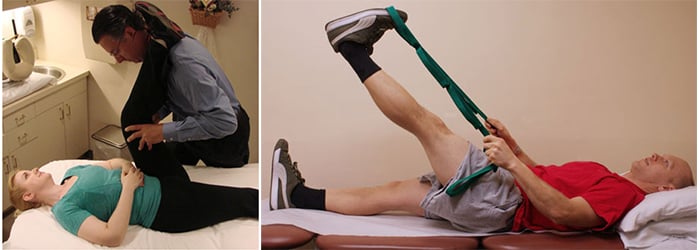Hamstring Injuries
The hamstrings are three muscles grouped in the back of the thigh: the semitendinosus, the semimembranosus and the biceps femoris. They are the most common muscles injured in running sports such as soccer or football. Hamstring injuries often occur at the moment a person pushes off to begin running.
Most hamstring strain or pull injuries are partial thickness tears, in which only part of a muscle is torn. A suspected hamstring tear can be diagnosed with an MRI. The injury can usually be treated nonsurgically with rest, ice, compression, and elevation (RICE), as well as nonsteroidal anti-inflammatory drugs (NSAIDs) such as ibuprofen. A patient with a strained hamstring usually also undergoes physical therapy for several weeks.
Severe partial tears and complete hamstring tears require longer periods of rest and conservative management. A patient should not return to full activity until he or she is pain-free and has a full range of motion and strength. Surgery is usually not required except for extreme injuries, such as when a hamstring tendon is torn completely off the bone.
Several factors can increase the risk of hamstring injury: older age, lack of flexibility or strength in the muscle, fatigue, and prior injury to the muscle. (After any hamstring injury, inflammation and swelling cause scar tissue to form, which makes the muscle weaker, less flexible more prone to injury.) The best ways to avoid pulling a hamstring are to stretch propertly (especially shortly before activity) and engage in a sustained strength training exercise program.

Hamstring stretches – assisted and unassisted
